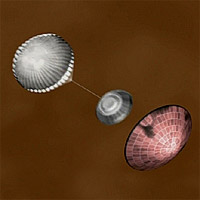Enforcing Single-Season Seeds, Monsanto Sues Farmers
 By Paul Elias The Associated Press
By Paul Elias The Associated Press  Published: Jan 13, 2005
Published: Jan 13, 2005  SAN FRANCISCO (AP) - Monsanto Co.'s "seed police" snared soy farmer Homan McFarling in 1999, and the company is demanding he pay it hundreds of thousands of dollars for alleged technology piracy.
SAN FRANCISCO (AP) - Monsanto Co.'s "seed police" snared soy farmer Homan McFarling in 1999, and the company is demanding he pay it hundreds of thousands of dollars for alleged technology piracy. McFarling's sin? He saved seed from one harvest and replanted it the following season, a revered and ancient agricultural practice.
"My daddy saved seed. I saved seed," said McFarling, 62, who still grows soy on the 5,000 acre family farm in Shannon, Miss. and is fighting the agribusiness giant in court.
Saving Monsanto's seeds, genetically engineered to kill bugs and resist weed sprays, violates provisions of the company's contracts with farmers.
Since 1997, Monsanto has filed similar lawsuits 90 times in 25 states against 147 farmers and 39 agriculture companies, according to a report issued Thursday by The Center for Food Safety, a biotechnology foe.
In a similar case a year ago, Tennessee farmer Kem Ralph was sued by Monsanto and sentenced to eight months in prison after he was caught lying about a truckload of cotton seed he hid for a friend.
Ralph's prison term is believed to be the first criminal prosecution linked to Monsanto's crackdown. Ralph has also been ordered to pay Monsanto more than $1.7 million.
The company itself says it annually investigates about 500 "tips" that farmers are illegally using its seeds and settles many of those cases before a lawsuit is filed.
In this way, Monsanto is attempting to protect its business from pirates in much the same way the entertainment industry does when it sues underground digital distributors exploiting music, movies and video games.
In the process, it has turned farmer on farmer and sent private investigators into small towns to ask prying questions of friends and business acquaintances.
Monsanto's licensing contracts and litigation tactics are coming under increased scrutiny as more of the planet's farmland comes under genetically engineered cultivation.
Some 200 million acres of the world's farms grew biotech crops last year, an increase of 20 percent from 2003, according to a separate report released Wednesday.
Many of the farmers Monsanto has sued say, as McFarling claims, that they didn't read the company's technology agreement close enough. Others say they never received an agreement in the first place.
The company counters that it sues only the most egregious violations and is protecting the 300,000 law-abiding U.S. farmers who annually pay a premium for its technology. Soy farmers, for instance, pay a "technology fee" of about $6.50 an acre each year.
Some 85 percent of the nation's soy crop is genetically engineered to resist Monsanto's herbicide Roundup, a trait many farmers say makes it easier to weed their fields and ultimately cheaper to grow their crops.
"It's a very efficient and cost-effective way to raise soybeans and that's why the market has embraced it," said Ron Heck, who grows 900 acres of genetically engineered soybeans in Perry, Iowa.
Heck, who is also chairman of the American Soybean Association, said he doesn't mind buying new seed each year and appreciates Monsanto's crackdown on competitors who don't pay for their seed.
"You can save seed if you want to use the old technology," Heck said.
The company said the licensing agreement protects its more than 600 biotech-related patents and ensures a return on its research and development expenses, which amount to more than $400 million annually.
"We have to balance our obligations and our responsibilities to our customers, to our employees and to our shareholders," said Scott Baucum, Monsanto's chief intellectual property protector.
Still, Monsanto's investigative tactics are sewing seeds of fear and mistrust in some farming communities, company critics say.
Monsanto encourages farmers to call a company hot line with piracy tips, and private investigators in its employ act on leads with visits to the associates of suspect farmers.
Baucum acknowledged that the company walks a fine line when it sues farmers.
"It is very uncomfortable for us," Baucum said. "They are our customers and they are important to us."
The Center for Food Safety established its own hot line Thursday where farmers getting sued can receive aid. It also said it hopes to convene a meeting among defense lawyers to develop legal strategies to fight Monsanto.
The company said it has gone to trial five times and has never lost a legal fight against an accused pirate. The U.S. Supreme Court in 1980 allowed for the patenting of genetically engineered life forms and extended the same protections to altered plants in 2001. Earlier this year, a Washington D.C. federal appeals court specifically upheld Monsanto's license.
"It's sad. It's sickening. I'm disillusioned," said Rodney Nelson, a North Dakota farmer who settled a Monsanto suit in 2001 that he said was unfairly filed. "We have a heck of an uphill battle that I don't think can be won."
AP-ES-01-13-05 2347EST
![]()
![]()



